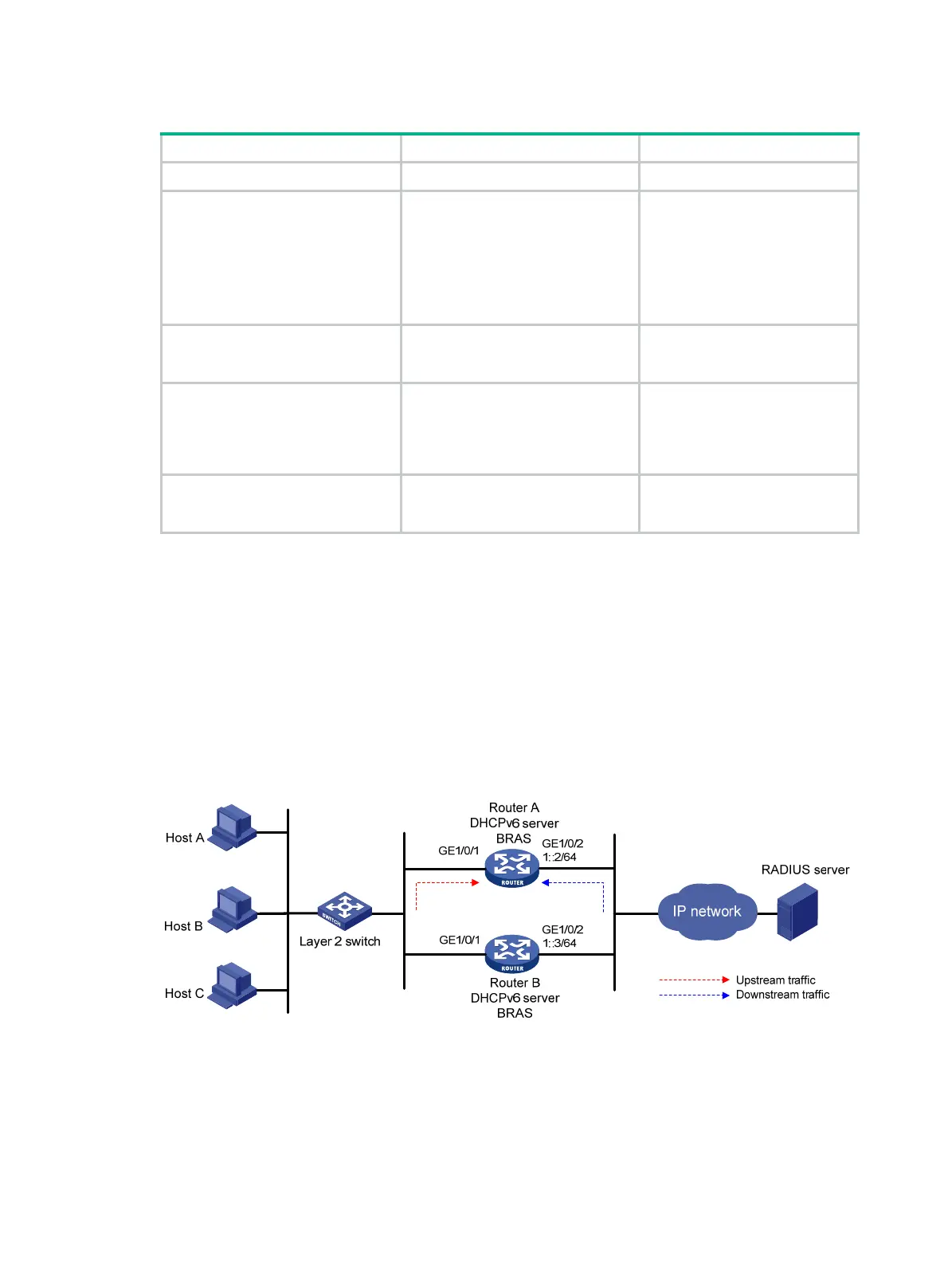249
To configure DHCPv6 binding auto backup:
Step Command Remarks
1. Enter system view.
system-view
N/A
2. Configure the DHCPv6 server
to back up the bindings to a
file.
ipv6 dhcp server database
filename
{ filename |
url
url
[
username
username [
password
{
cipher
|
simple
} key ] ] }
By default, the DHCPv6 server
does not back up the DHCPv6
bindings.
With this command executed,
the DHCPv6 server backs up its
bindings immediately and runs
auto backup.
3. (Optional.) Manually save the
DHCPv6 bindings to the
backup file.
ipv6 dhcp server database
update now
N/A
4. (Optional.) Set the waiting
time after a DHCPv6 binding
change for the DHCPv6
server to update the backup
file.
ipv6 dhcp server database
update interval
seconds
The default waiting time is 300
seconds.
If no DHCPv6 binding changes,
the backup file is not updated.
5. (Optional.) Terminate the
download of DHCPv6
bindings from the backup file.
ipv6 dhcp server database
update stop
N/A
Advertising subnets assigned to clients
This feature enables the route management module to advertise subnets assigned to DHCPv6
clients. This feature achieves symmetric routing for traffic of the same host.
As shown in Figure 100,
Router A and Router B act as both the DHCPv6 server and the BRAS
device. The BRAS devices send accounting packets to the RADIUS server. To enable the BRAS
devices to collect correct accounting information for each RADIUS user, configure the DHCPv6
server to advertise subnets assigned to clients. The upstream and downstream traffic of a RADIUS
user will pass through the same BRAS device.
Figure 100 Network diagram
The subnet advertising on the master device of a VSRP instance takes effect. If the address pool is
applied to a VPN instance, the VPN instance must exist.
To configure the subnet advertisement function:
